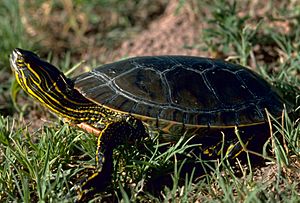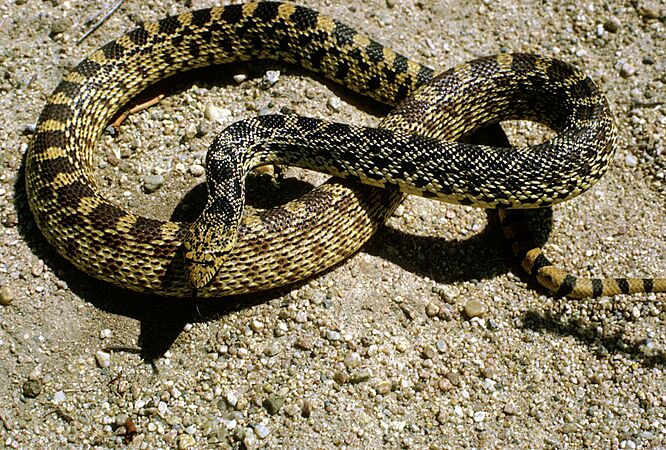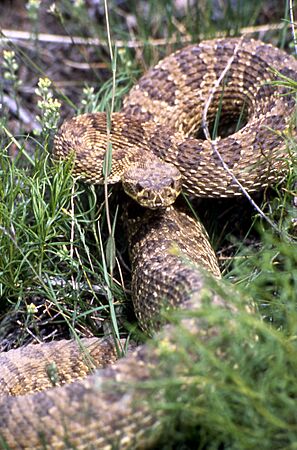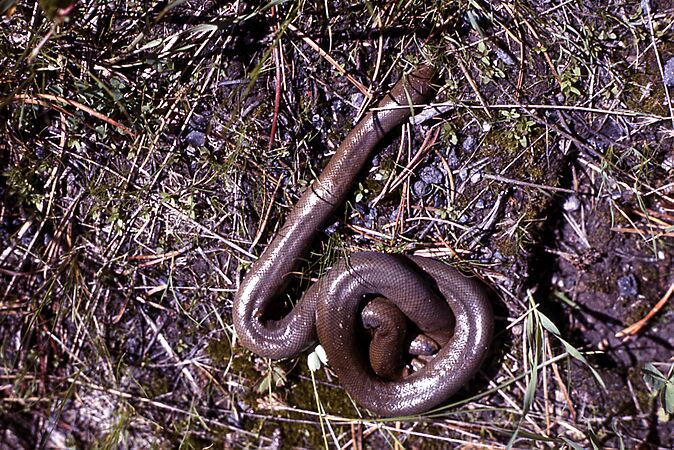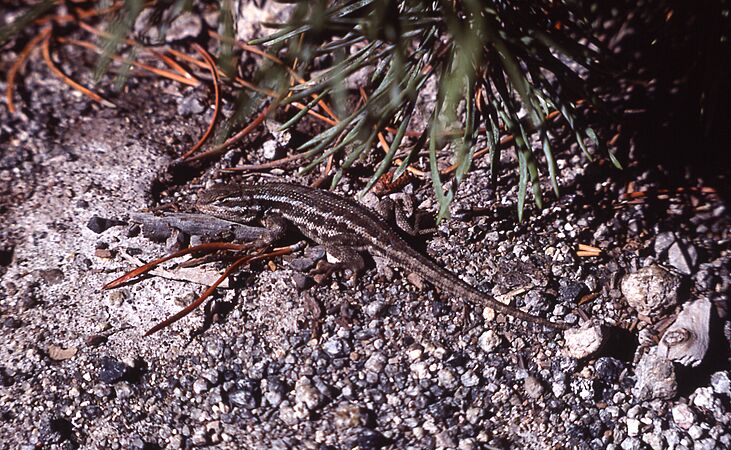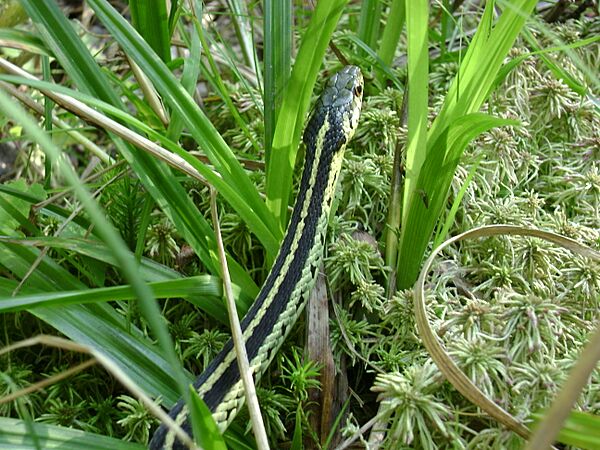List of reptiles of Yellowstone National Park facts for kids
This is a list of some of the amazing reptiles you can find in Yellowstone National Park in the United States. Even though Yellowstone is famous for its geysers and hot springs, it's also home to several types of snakes and lizards! These cold-blooded animals are an important part of the park's ecosystem.
Contents
Painted Turtle
Painted turtles are beautiful turtles with colorful markings. You can often spot them in the rivers and lakes along the northern parts of Yellowstone National Park.
Bullsnake
The bullsnake (Pituophis catenifer sayi) is a very large snake that is not venomous, meaning it's not dangerous to humans. It's a type of colubrid snake found across parts of the United States, northern Mexico, and southern Canada. This snake is a subspecies of the gopher snake. Its scientific name, sayi, honors a zoologist named Thomas Say.
In Yellowstone, the bullsnake is the park's biggest reptile. It can grow to be about 50 to 72 inches long! You'll usually find them in lower, warmer, and drier areas of the park, like near Mammoth Hot Springs. Bullsnakes live in burrows and mostly eat small rodents. People sometimes mistake them for rattlesnakes because they look similar and act a bit like them when scared. If a bullsnake feels threatened, it will coil up, hiss loudly, and shake its tail against the ground. This can make a rattling sound, just like a rattlesnake!
Prairie Rattlesnake
The prairie rattlesnake (Crotalus viridis viridis) is a venomous snake. This means it can deliver venom through its bite. It's a type of pitviper found in the western United States, southwestern Canada, and northern Mexico.
In Yellowstone, the prairie rattlesnake is the only dangerously venomous snake in the park. It lives in the lower Yellowstone River areas, including places like Reese Creek and Rattlesnake Butte. These areas are usually drier and warmer than other parts of the park. Prairie rattlesnakes are generally defensive, not aggressive. They will usually try to avoid you rather than attack. In the entire history of Yellowstone National Park, there have only been two reported rattlesnake bites.
Rubber Boa
The rubber boa (Charina bottae) is a unique snake that belongs to the Boidae family. This family includes many non-venomous snakes, often called boas. The rubber boa is one of four species in its genus, Charina, with three of them living in North America.
You don't see the rubber boa very often in Yellowstone. This is because it's a nighttime creature and spends a lot of time burrowing underground. It eats rodents and often hides under leaves, soil, or inside rodent burrows. You're most likely to find it in rocky areas near streams or rivers, especially where there are shrubs or trees. Recently, they have been seen in the Bechler region and Gibbon Meadows.
Sagebrush Lizard
The sagebrush lizard (Sceloporus graciosus graciosus) is a common lizard found in the western United States of America. It's named after the sagebrush plants where it often lives. This lizard has rough, spiny scales along its back.
In Yellowstone, the sagebrush lizard is the only lizard species found in the park. While they usually live below 6,000 feet elevation, in Yellowstone, they can be found as high as 8,300 feet! Some groups of these lizards live in areas affected by the park's hot springs and geysers. They are most common along the lower parts of the Yellowstone River near Gardiner, Montana. You can also find them in the Norris Geyser Basin and other hydrothermal areas.
Valley Garter Snake
The valley garter snake (Thamnophis sirtalis fitchi) is a subspecies of the common garter snake. This snake is native to North America. Most garter snakes have a pattern of yellow stripes on a brown background. They usually grow to be about 1 to 1.5 meters (3 to 5 feet) long. The common garter snake is a daytime snake. In summer, it's most active in the morning and late afternoon. During cooler seasons, it prefers to be active during the warm afternoons.
In Yellowstone, the valley garter snake was once thought to be common. However, its numbers are now declining for reasons that are not fully understood. In the park, it has only been seen in the Fall River drainage, which is in the Bechler region.
Wandering Garter Snake
The wandering garter snake (Thamnophis elegans vagrans) is a subspecies of the western terrestrial garter snake. This type of snake lives only in Southwestern Canada and the Western United States. There are seven recognized subspecies of this snake. Most wandering garter snakes have a yellow, light orange, or white stripe down their back. They also have two stripes of the same color on their sides. Some even have red or black spots between these stripes. This snake often lives in coniferous forests and enjoys being near water.
In Yellowstone, the wandering garter snake is the most common reptile you'll find. It is usually found near water in all areas of the park. It has a varied diet, eating small rodents, fish, frogs, tadpoles, salamanders, earthworms, slugs, snails, and even leeches.
Images for kids
- Reptiles of Yellowstone National Park
See also


